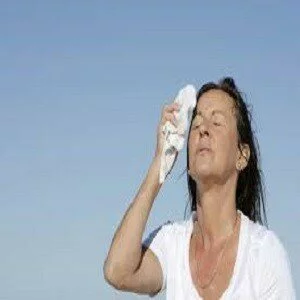Health Complications of Heat.
The body generates heat by the metabolic activities of cells, they break down glucose or fat or protein to produce energy for its activities from the minute activities to major activities like exercises. We utilize only about 25 percent of the energy produced , the balance 75 percent is in form of just heat.
If the heat remains within the body, the body temperature could go higher than the normal body temperature of 98.6F but the body has a thermostat called the hypothalamus which is located in the brain. This triggers certain actions such more to the skin and sweating which remove heat from the body , conversely if the body temperature falls below 98.6F, the same hypothalamus triggers certain actions such as less blood to the skin, no sweating and shivering to generate more heat in the muscles so as to increase the body temperature to 98.6F.
When the mechanism by which the body regulates its internal fails and the body temperature increases beyond 98.6F, HEAT STRESS results.
The risk factors for heat stress include intensity of exertion, duration of exertion, hot environment, humidity, closed environment, obesity, skin disorders, and some medical conditions.
Workers at risk of heat stress include outdoor workers and workers in hot environments such as firefighters, bakery workers, farmers, construction workers, miners, boiler room workers, factory workers, and others.
Workers at greater risk of heat stress include those who are 65 years of age or older, are overweight, have heart disease or high blood pressure, or take medications that may be affected by extreme heat.
Prevention of heat stress in workers is important. Employers should provide training to workers so they understand what heat stress is, how it affects their health and safety, and how it can be prevented.
The health complications of heat stress are discussed below:
1. Dehydration
The body reacts to increased internal body temperature by increased blood supply to the skin accompanied by sweating; the evaporation of the sweat fluid has a cooling effect. If the environment is hot and humid and the affected person has clothes on, the sweat will not evaporate; the internal body temperature will continue to rise and the body will respond by increased sweating. When we sweat we lose water; consequently continued sweating will lead to dehydration, meaning we have less water in our body than we need to function adequately.
2. Reduced concentration
When we sweat we lose water; consequently continued sweating will lead to dehydration, meaning we have less water in our body than we need to function adequately. This results in less blood supply and oxygen to the brain which can lead brain related symptoms such as dizziness, fatigue, loss of concentration and poor judgment.
3. Injuries
As said earlier when we sweat we lose water; consequently continued sweating will lead to dehydration, meaning we have less water in our body than we need to function adequately. This results in less blood supply and oxygen to the brain which can lead brain related symptoms such as dizziness, fatigue, loss of concentration and poor judgment.
Poor judgment and lack of concentration can lead to injuries in the course of work
4. Heat rash
Heat rash is condition characterized by burning, itchy small aggregated small swellings which may be solid, or have fluid or pus on the covered parts of the body; notably the trunk, under the breasts in women and the goins in men. It is usually caused by hot humid conditions. Consequently workers in hot and humid environment are at great risk of heat rash.
5. Heat cramps
Sweating depletes the body of water and electrolytes (salt and potassium); this could lead to spontaneous sustained muscle contraction called Muscle Cramp. This affects principally the muscles of the thighs and calf. The affected muscles are hard and tender.
The condition can be very painful and usually follows strenuous activities involving the muscles. Treatment is by moving the affected person to cool environment and administering salt/water solution
6. Heat collapse
Continued sweating can lead to severe loss of water from our body, this can affect the blood volume and the blood pressure, leading to low blood pressure. This results in less blood supply and oxygen to the brain, The body responds by contraction of the skin blood vessels and collapse of the person to shore up blood supply to brain. Consequently the skin is cool and moist, the pulse is weak and the blood pressure is low.
Heat collapse follows prolonged strenuous exercise in a hot humid environment or prolonged standing in a hot humid environment.
Immediate management includes resting and lying flat in a cool environment together with fluid and salt replacement by mouth or drip.
7. Heat exhaustion
Heat exhaustion results from prolonged strenuous activity in a hot environment with inadequate water intake. It is characterized by excessive water and salt loss from the body through sweating, heavy breathing , thirst, dizziness, impairment of judgement, fainting, and sometimes madness. The skin is moist and cold.
The body temperature is usually above 101 degrees Fahreinhit.
8. Heat stroke
This is a life threatening condition and happens when the body temperature is above 40 degrees Celsius. Heat stroke is associated with excessive water and salt loss, disorientation, brain damage, kidney damage, liver damage and very low blood pressure.
It is caused by prolonged vigorous activity in hot environment with drinking water particularly by old persons, those who are chronically ill and those on certain medications that can affect the heat regulatory mechanisms of the body.
The mortality rate of heat stroke is quite high.








I enjoy the efforts you have put in this, appreciate it for all the great content.